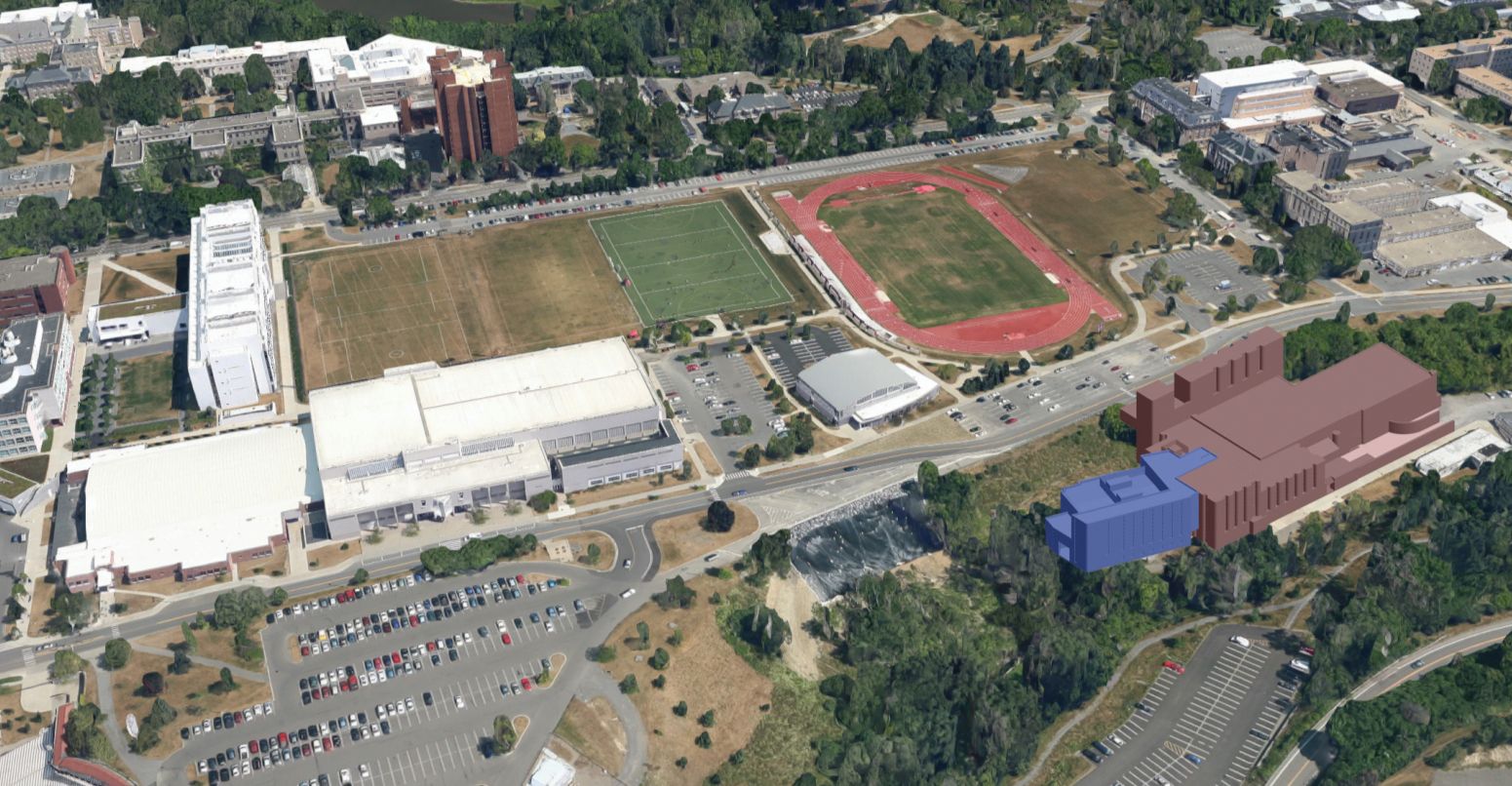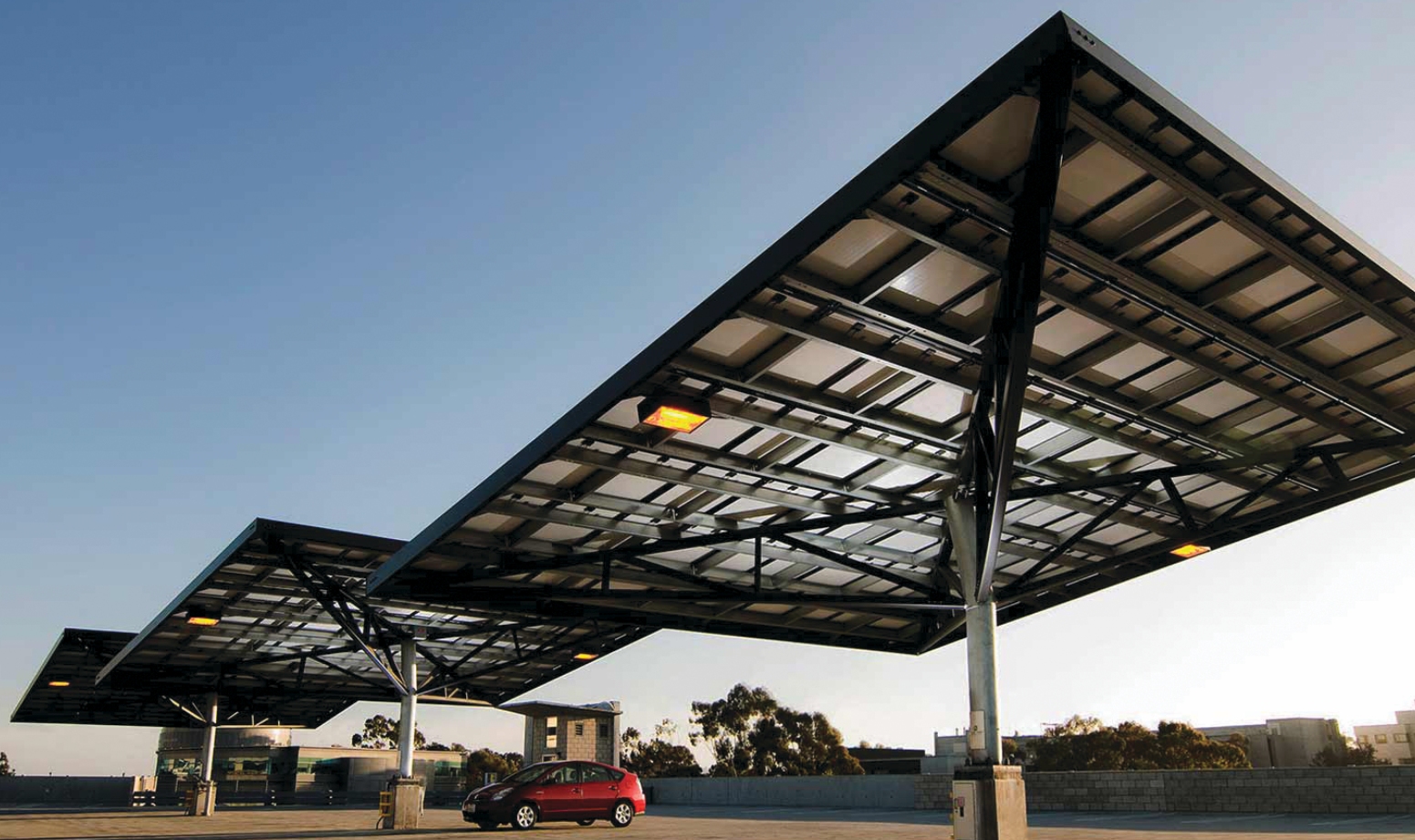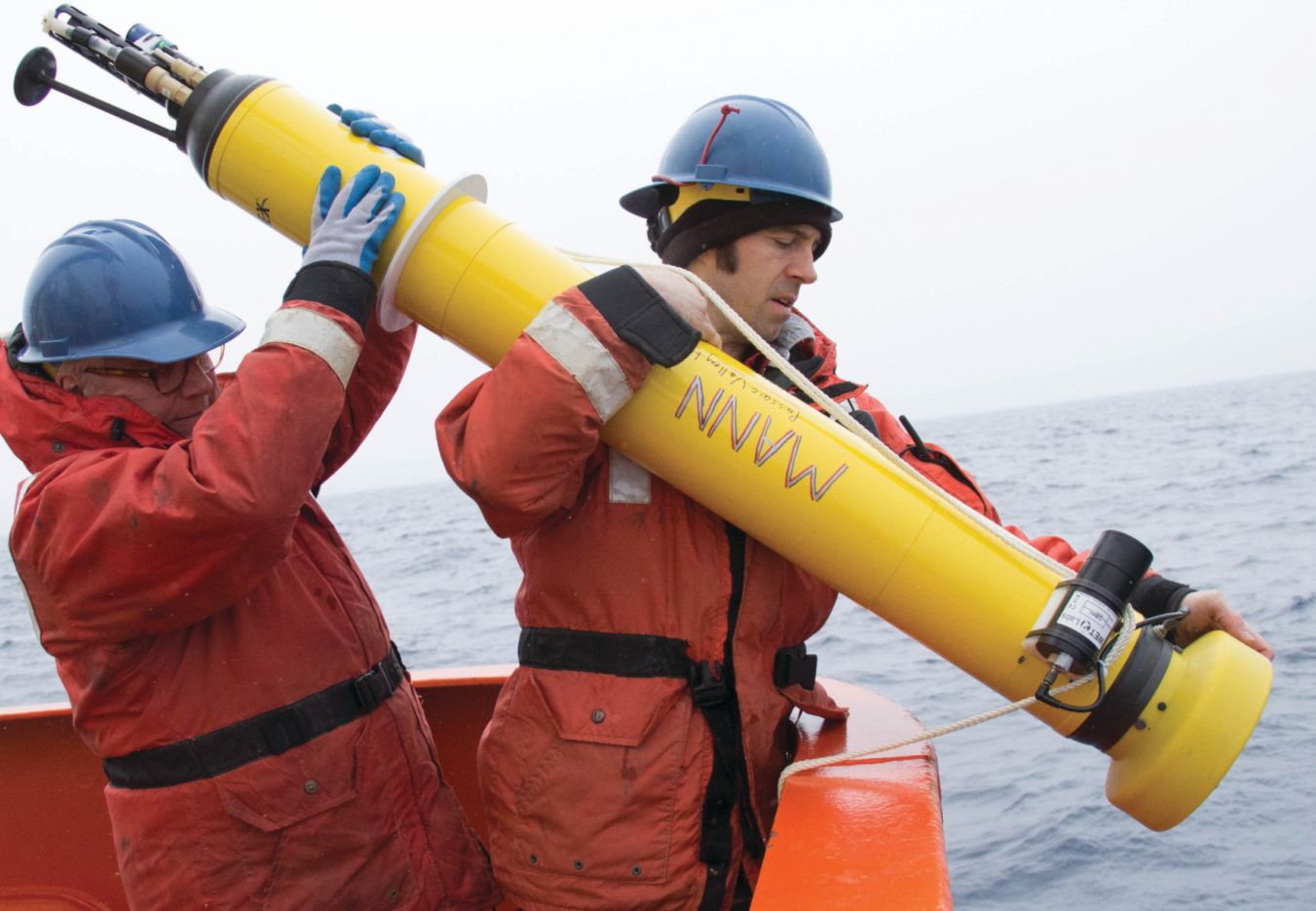NSF launches funding schemes for medium-scale infrastructure
DOI: 10.1063/PT.3.4652
Does the research facility you want to build cost upwards of $100 million? Try lobbying Congress or chasing down the big money through NSF’s major-facility awards or the Department of Energy. Need up to a few million dollars for lab equipment? Ask NSF or another funding agency. Those are the standard avenues for funding scientific infrastructure in the US. Until recently, however, scientists had few places to turn for medium-cost infrastructure.
Now NSF seeks to fill that gap with a pair of funding lines. Awards in the smaller midscale research infrastructure category (MidScale RI-1) are available for projects costing from $6 million to $20 million and can encompass design or implementation; the MidScale RI-2 line funds infrastructure costing from $20 million to $100 million. The two programs run in alternate years.
The funding gap had been recognized for a long time. Then in 2017, as part of the American Innovation and Competitiveness Act, Congress instructed NSF to address it. The agency came up with the specific approach as part of its 10 Big Ideas, an exercise for planning future investments. Medium-scale projects have been funded in a few divisions within NSF, but the new awards are open to all science and engineering fields. When the agency put out requests for proposals in late 2018, they poured in across all fields, says Allena Opper, NSF program director for experimental nuclear physics, who cochaired the working group for the MidScale RI-2 projects.
In late 2019 NSF announced the winners of the first round of MidScale RI-1 funding. Ten projects will receive a total of $121 million over five years. Then, on 29 October, NSF announced three awards totaling $125 million over five years for shovel-ready MidScale RI-2 projects: A high-magnetic-field beamline at Cornell University’s synchrotron light source received nearly $33 million; a test bed for future power-grid architectures at the University of California, San Diego (UCSD), $39 million; and a network of global ocean-monitoring floats by a collaboration led by the Monterey Bay Aquarium Research Institute, $53 million.

The blue structure is an artist’s rendition of the housing for a high-magnetic-field beamline to be added to the Cornell High Energy Synchrotron Source. The adjacent brown structure represents the existing lab.
CORNELL UNIVERSITY

A competitive edge
A MidScale RI-2 award will put a 20-tesla superconducting magnet on a new beamline at the Cornell High Energy Synchrotron Source (CHESS). It will be the strongest persistent magnet on any synchrotron worldwide. According to NSF division director for materials research Linda Sapochak, the project is part of a longer-term goal to keep the US competitive in high-magnetic-field science.
By combining it with strong magnetic fields, x-ray scattering can be brought to bear on phase changes induced in materials by magnetic fields. The prime science driver is to probe quantum materials such as spin liquids, frustrated magnets, and topological insulators. “Strong magnetic fields provide the most direct way to manipulate quantum states of matter,” says Cornell physicist Brad Ramshaw. Jacob Ruff, director of the NSF-funded beamlines at CHESS, anticipates that scientists will also use the high-field beamline for structural biology, chemistry, and other studies.
Magnetic fields can induce big changes. “In some materials interesting behavior may occur at 2 T, while in others it takes 20 T or 200 T,” says Ruff. Many synchrotron sources have beamlines equipped with magnetic fields of 2–7 T. The strongest persistent magnet used in structural studies is a 17 T solenoid that the UK’s University of Birmingham dispatches to x-ray and neutron sources. Although a couple of synchrotron facilities have made “heroic measurements” with pulsed fields up to 30 T that have offered glimpses, Ruff says, “we have not yet been able to carefully study materials at those fields in detail.”
The NSF award covers the cost to build a new beamline and install a commercial magnet, which partners at the National High Magnetic Field Laboratory (MagLab) will help choose. The partners will also work jointly on the experimental station so that it can eventually accommodate a 40 T magnet that the MagLab is developing.
To open in 2025 as planned, “we need to be in the dirt” by summer 2022, says CHESS director Joel Brock. Housing the magnet requires special infrastructure—for example, the concrete cannot contain conventional rebar—for which Cornell needs to raise $24 million.
The high-field beamline team is collaborating with the University of Puerto Rico at Rio Piedras to bring doctoral students to Cornell. Starting in September, four students per year will come to design, test, and build instruments and parts for the new beamline. Ramshaw, the Cornell liaison for the partnership, sees “a lot of excitement on both sides.” He notes a general need to train more people in x-ray instrumentation, and the collaboration gives students in Puerto Rico direct access to a world-class facility.
Flatter architecture
A team of engineers and computer scientists at UCSD won a MidScale RI-2 award to create a test bed to explore algorithms for controlling and monitoring energy use. To start with, the project will link existing applications, including 15 solar power generators, devices in a dozen classroom and administrative buildings, and roughly 300 electric-vehicle charging stations. A big chunk of the award will go to adding thousands of controllable light fixtures and hundreds of air-handling systems. “We have a large number of different types of devices and flexible loads,” says John Dilliott, UCSD director of utilities and sustainability.
Today’s power grids employ central communications systems, in which a single controller exchanges data with each device, says principal investigator Jan Kleissl, director of the university’s Center for Energy Research. Future grid systems will have to deal with millions of devices—“every water heater, AC unit, electric vehicle, and so on,” says Kleissl. A federated architecture, where responsibilities reside locally in neighborhood nodes and report only occasionally to a central entity, are expected to make communications in power systems—and ultimately power use—more efficient, he says.
Some 2000 devices will be connected by the test bed, which will make it the first of its kind in terms of size, device heterogeneity, number of devices, easy access for users, and the like. Sonia Martínez is a UCSD professor who researches distributed controls and coordination of power systems. “We have to break down decision making from top-down to a flatter architecture,” she says. The facility’s aim is to test ideas for the integration of renewable energy and load sharing using real loads and data. The team hopes that researchers from both academia and industry will use the test bed. “There is a barrier between the two worlds,” she says. “It’s hard for utilities to adopt new technologies. We hope that with the test bed they can be convinced that the power is reliable.”

One of 15 solar power generators that will be part of a set of 2000 devices linked to form a power-use test bed at the University of California, San Diego. The test bed will allow the exploration of algorithms to better manage power grids.
UNIVERSITY OF CALIFORNIA, SAN DIEGO

A longer-term goal, says Dilliott, is to expand to interactions with California’s power grid. “What we do here can be extrapolated to grid stability and energy efficiency. We’ll have granular control of buildings and employ algorithms to reduce energy use.”
Float fleet
The third inaugural MidScale RI-2 award is for a network of 500 ocean floats known as the Global Ocean Biogeochemistry (GO-BGC) Array. The floats carry sensors for oxygen, chlorophyll, nitrates, pH, particles, and sunlight. They record data from the upper ocean, within about 300 meters of the surface, where phytoplankton grows. “The goal is to measure the ocean’s metabolism,” says principal investigator Ken Johnson, of the Monterey Bay Aquarium Research Institute. The University of Washington, Scripps Institution of Oceanography, Woods Hole Oceanographic Institution, and Princeton University are partners in the project.
Plankton plays a huge role in the globe’s biological pump by taking carbon dioxide out of the air. How and where the microscopic plants do that is sensitive to ocean warming. “There are all kinds of questions about whether the mixing of deep water and warmer top water changes,” Johnson says. “And if you reduce the plankton concentration in the upper ocean, will the ocean absorb less CO2 from the atmosphere?”
The floats are to spend most of the time a kilometer below the surface. Every 10 days they automatically drop to 2 km and then rise to the surface. From there, they transmit data via satellite, and then sink again. “The data is offloaded in 15 minutes,” says Johnson. “You don’t want the floats at the surface for long, because things grow on them, or they could be crushed by ships.” Parking them at 1 km prevents biofouling, he says. And the detour down to 2 km is useful for calibration, because measured variable values are stable there.
An extension of a pilot network in the Antarctic Ocean, the project is intended to form half of an international network. The best floats are made at the University of Washington, Johnson says, and the cost to acquire and deploy them is about $100 000 each; the team hopes to transfer those float-building skills to industry and bring down the price. Some countries deploy simpler floats with only an oxygen sensor, which cost about $30 000. But, says Johnson, “if you want the full carbon cycle, it helps to have all of the sensors.
“If we want climate signals, we will want to do this for decades,” says Johnson. “But it’s an NSF grant. We have to do cool science in five years and hit a home run.” And, he says, few data exist about the open global oceans, “so there are plenty of home runs to hit.” The “cool” areas of research that the team—and other scientists—may pursue, he says, include the effects on plankton of nonlinear interactions between the wind and ocean, the cycle of plankton production, the linkage between volcanic dust and plankton productivity, and the patchiness of uptake and outgassing of CO2.
The first GO-BGC floats are scheduled to be deployed this spring. The data will be freely available.
Smaller midscale infrastructure
Among the MidScale RI-1 awards for infrastructure is the neutron spin-echo spectrometer to be built at NIST in Maryland with $11.8 million. And for design, a team led by the Smithsonian Astrophysical Observatory won $12.7 million to plan an upgrade to the Event Horizon Telescope (EHT), the linked array of radio dishes that in April 2019 produced the first-ever image of a black hole. (See “What it took to capture a black hole
The spin-echo spectrometer takes advantage of an upgrade at NIST’s neutron source that will more than double the flux. Combined with stronger and more controlled magnetic fields due to improved correction coils, the new instrument will “have better data and a 10 times better data acquisition rate,” says Dan Neumann, director of the NSF-funded NIST Center for High Resolution Neutron Scattering.
Spin-echo spectrometry probes nanoscale dynamics—in both time and size—in systems such as soft matter, biological samples, colloidal systems, and nanomaterials. “It’s an esoteric technique,” says Neumann. Even so, the existing spectrometer is the facility’s most oversubscribed instrument.
“The new instrument will let us look at slower processes, to over 300 ns for most samples, and 700 ns for others,” says principal investigator Norman Wagner of the University of Delaware. The third partner on the award is the University of Maryland.
One company hopes to use the new spin-echo spectrometer to study the viscosity and longer-time-scale dynamics of a monoclonal antibody solution. The motivation is to understand the antibody solution at a molecular scale and then to adjust the interactions so that the monoclonal antibodies could be delivered by injection rather than intravenously.

Researchers deploy a float in the Antarctic Ocean. Starting this spring, a collaboration headed by the Monterey Bay Aquarium Research Institute will build and deploy 500 such floats, each carrying six sensors to monitor the carbon cycle and plankton growth. The project is one of the inaugural NSF midscale research infrastructure awards.
GRETA SHUM

The improved spin-echo spectrometer was on NIST’s wish list, but in-house money was unavailable, says Neumann. “It would have taken many more years—if at all—if this money hadn’t come through,” he says. And the NIST instrument is an adaptation of one in Germany, which “makes it an easy sell. The risk is low and we know the costs rather accurately.” The instrument will open to users in 2024.
Earth-sized video camera
Imagine making a movie of a black hole, says astronomer and EHT founding director Sheperd Doeleman. That’s exactly what he and his collaborators are planning.
The extreme gravity of a supermassive black hole inexorably pulls in surrounding matter, which heats to billions of degrees. Magnetic fields are swept along by the gas and get caught up in the rotation of the black hole. The fields fling out jets of charged particles that can stretch for thousands of light-years. “If we could observe the orbits of gas around a black hole, we could devise new tests of Einstein’s theory of gravity,” says Doeleman. “We could see how the jets are formed and how matter and energy are redistributed on galactic scales.” With the next-generation EHT, he says, “we aim to build an Earth-sized video camera to turn black holes into extreme cosmic laboratories.”
The iconic image of a black hole was stitched together using data from eight radio telescopes scattered around the world and synchronized with atomic clocks. The award will be used to design new telescopes to increase the network to 20 dishes. The team will run simulations to determine the best dish size, radio frequencies, and locations for them.
A major part of the award will go toward outfitting the Large Millimeter Telescope near Puebla, Mexico, with a prototype superconducting receiver. The MidScale RI-1 award will put the team in a position to apply for the larger sums it will need to realize the next-generation EHT. Says Doeleman, “We want to make a black hole movie by the end of the decade.”
Preliminary proposals for the next round of MidScale RI-1 grants are due this month; a new call for MidScale RI-2 proposals was issued in early December, with letters of intent due on 21 February.
More about the Authors
Toni Feder. tfeder@aip.org
